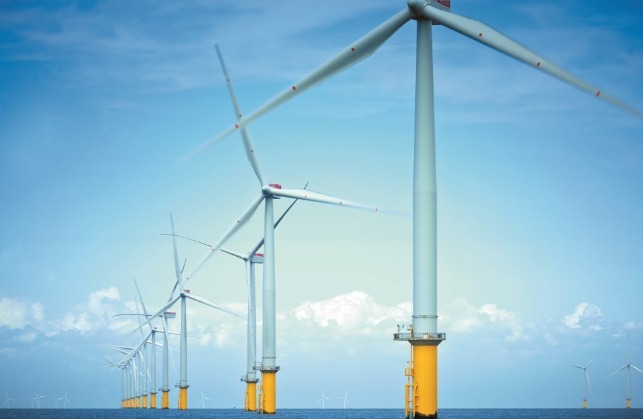Competitive bidding for projects has driven global levelized costs of electricity (LCOEs) from offshore wind down 22% since the first half of 2016 and 28% from the second half of last year, according to Bloomberg New Energy Finance (BNEF).
BNEF says its work on levelized costs draws on thousands of data points collected by the company’s analysts and researchers on capital costs; financing; operations and maintenance expenses; and capacity factor, the amount of electricity generated per year from a given capacity in megawatts.
Seb Henbest, head of Europe, Middle East and Africa at BNEF and in charge of the levelized cost modeling work, says, “For years, offshore wind has been regarded as a high-cost option compared to onshore wind, solar PV, coal and gas. This study shows that the economics of offshore wind are now improving fast, with the best sites getting closer to striking distance of more mature technologies.”
Tom Harries, offshore wind analyst at BNEF, adds, “Behind this improvement are the use of much bigger turbines, enhanced know-how on managing the construction of arrays in the North Sea and the impact of auction programs in Europe. The latter have simplified development by providing transmission and a permitted site and have led to fierce competition between bidders.”
In September, two offshore wind projects in Danish waters totaling 350 MW were awarded to Vattenfall, with a record-breaking bid of just EUR 60/MWh. In July, another utility, Dong Energy, won a contract to develop a 700 MW Dutch offshore array at EUR 72.70/MWh. Other projects, such as those in deep U.K. waters, are going ahead at higher cost, and this explains why the global benchmark, although falling rapidly, is well above these recent figures from Denmark and the Netherlands.
Offshore wind is not the only technology to have significantly improved its LCOE this year: Onshore wind’s global benchmark estimate is $68/MWh for the second half of 2016 – some 16% below the first half of the year. Onshore wind is already cost-competitive with coal- and gas-fired generation in many countries.
According to BNEF, the range for each technology reflects the fact that generating costs can vary greatly between projects, based not just on technology type, but also on the quality of the resource (for wind, solar, geothermal and hydro); the availability and price of feedstock (for coal, gas, nuclear and biomass); the cost of land; and local costs of manufacturing, importing and installing equipment. In offshore wind, the depth of the water and distance from shore are important factors. In all technologies in developing countries, the availability, or not, of concessional finance from international institutions has a big influence, BNEF notes.




